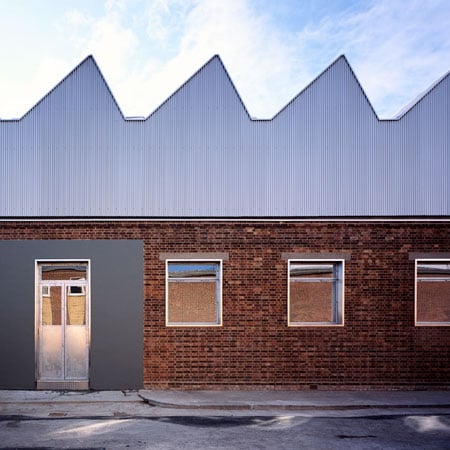
The Sackler Building by Haworth Tompkins
London architects Haworth Tompkins have completed a building to house the painting department of the Royal College of Art in London.
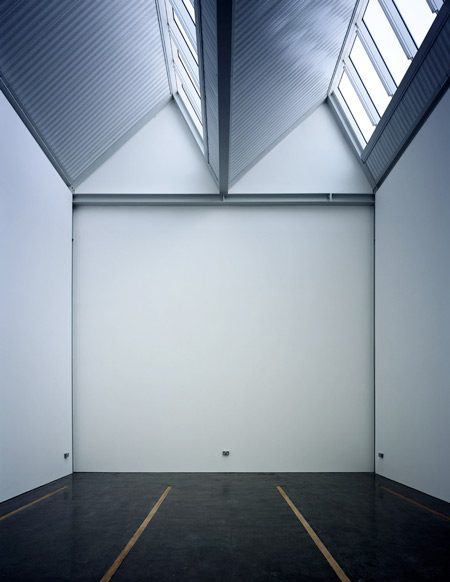
Called The Sackler Building, the project involved inserting an independent steel structure into the brick shell of the existing single-storey factory.
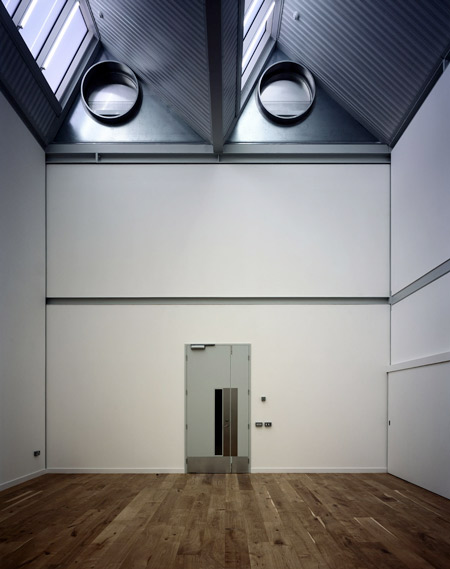
The zig-zag roof is glazed on the north face of each ridge, admitting indirect natural light to the open plan studios and new mezzanine within.
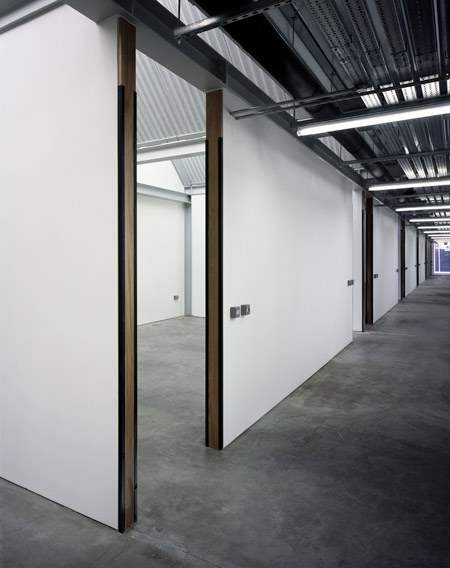
The building will provide spaces for 58 students, seminar rooms, workshops, offices, an exchange studio and a studio for visiting artists.
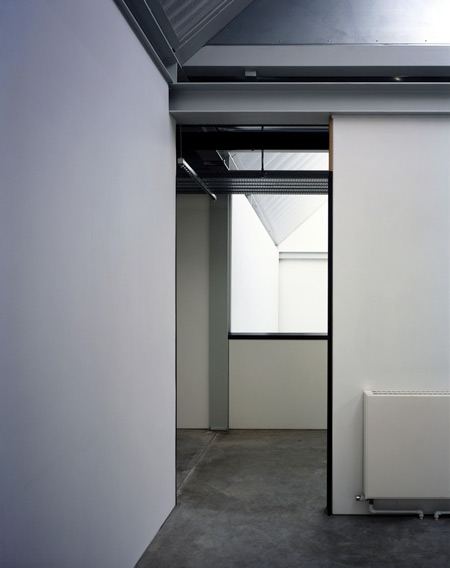
Photographs are by Hélène Binet.
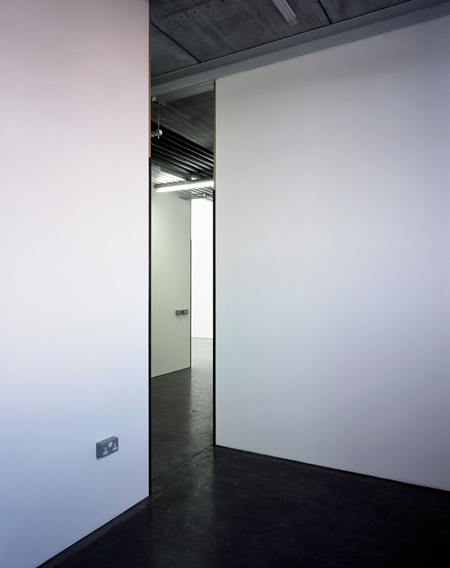
Here's some text from the RCA:
--
ROYAL COLLEGE OF ART - COMPLETION OF NEW PAINTING DEPARTMENT BUILDING: The Sackler Building
On November 19th the Royal College of Art's influential Painting Department will open its new building, designed by award-winning architects Haworth Tompkins. The Sackler Building, on Howie Street in Battersea, will house the entire Painting Department, currently divided between two separate sites in Kensington and Battersea. The development will provide purpose made accommodation for all the Painting students to work together under one roof for the first time in over 10 years. Alumni of the RCA Painting Department include David Hockney, Sir Peter Blake, Frank Auerbach, Bridget Riley, Tracey Emin and Chris Ofili.
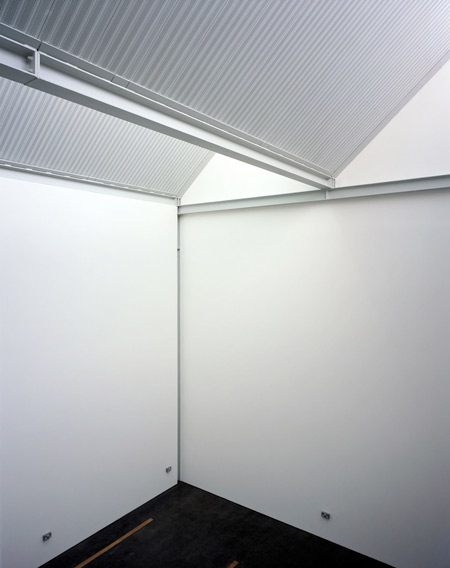
Prior to 1991, the Painting Department was housed in generous purpose built studios at the V&A in Exhibition Road. The transition from custom-made Victorian premises - with huge windows and a mural room - to the smaller and lower-ceilinged studios in Kensington was always going to be a challenge, as the replacement studios were unable to replicate the marvellous V&A spaces that went back to the days of Henry Cole.
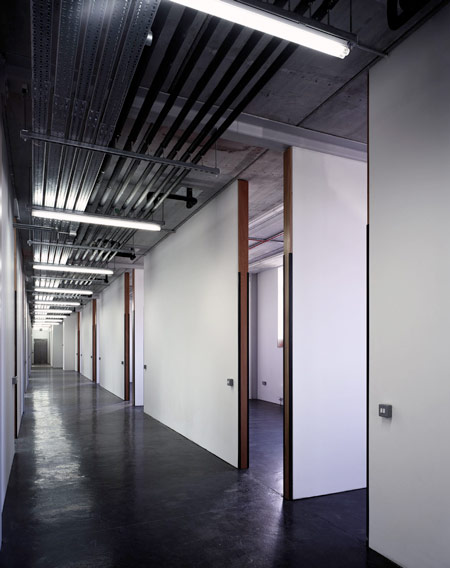
The new building at Battersea has provided a rare opportunity to move Painting back into the generous, lofty well-lit accommodation that it requires. Professor David Rayson, Head of Painting, worked closely with the Haworth Tompkins team led by architect Graham Haworth from the early stages of the commission. It is this collaborative approach that has ensured that the building will house some of the finest new studio spaces being built in the UK today.
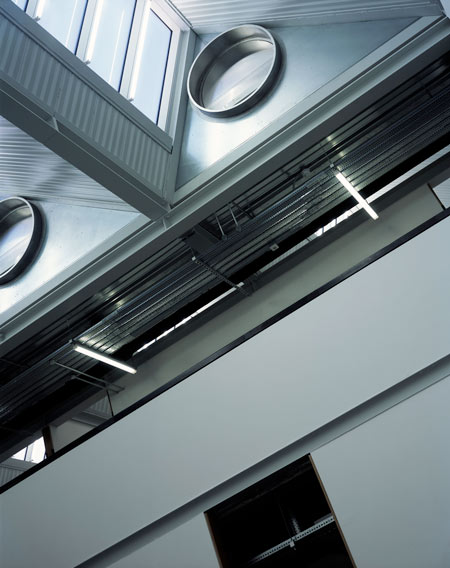
The old building - a single story factory - has been transformed into a series of new day lit spaces under a dramatic new roof form, by inserting a new independent steel structure within the existing brick enclosure. This significantly increases the height of the building, providing several extra large studios along with a mezzanine level, which will house a number of individual workspaces, whilst retaining an open plan environment.
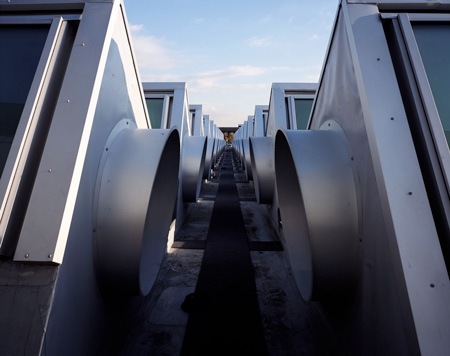
The specially profiled roof will mean much-needed north light can be achieved without direct glare from the sun, providing ideal studio conditions for painting. The building is designed to be naturally ventilated and lit with minimal running costs and a low carbon footprint. When open the new Sackler Building will provide working spaces for 58 students, an exchange studio and visiting artist studio, along with seminar rooms, workshops and offices for the academic and support staff.
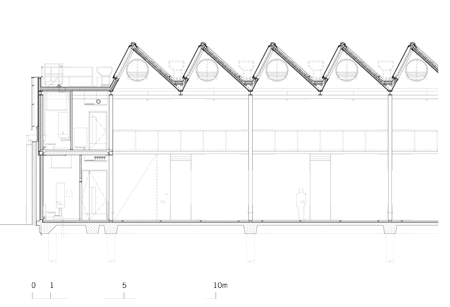
Click for larger image
The Sackler Building is the first phase of the RCA’s ambitious plan for a major new campus in Battersea. The campus will eventually house the Schools of Fine Art and Applied Art, and also provide accommodation for start-up units for new businesses in the fields of art and design as well as a gallery and lecture theatre. The second phase - adjacent to the new Painting Department - starts on site in January 2010.
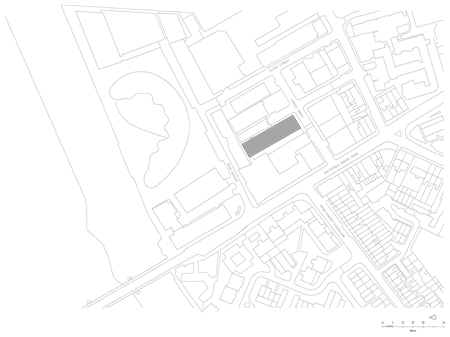
Click for larger image
To mark the opening of the building, before the new spaces morph into the Painting Studios, the Department is staging an exhibition of a selection of RCA Painting graduates and staff from the past 10 years, 1999-2009. The exhibition offers a unique opportunity to see the range of current contemporary painting practice.
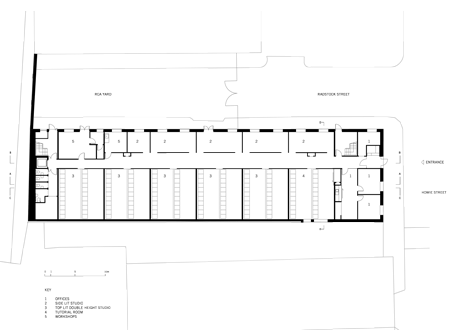
Click for larger image
All the contributing artists have a connection to the RCA Painting course from the last 10 years, and include staff and students such as Nigel Cooke, Sophie Von Hellermann, Neal Tait, Turner Prize nominees Goshka Macuga, and Gillian Carnegie, Varda Caivano, George Shaw, Paul Housley, Chantal Joffe, Phillip Allen and Daniel Sinsel. When invited to exhibit, the artists were all asked to include one of their works that they felt represented their own practice. Alongside existing work, a number of new pieces have been produced in time for the show.
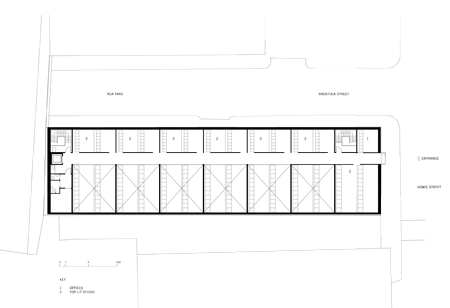
Click for larger image
The show will be opened by Iwona Blazwick, director of the Whitechapel Art Gallery, Rector of the Royal College of Art Dr Paul Thompson, and Professor Rayson on the 19th November with a high profile event to launch the opening of the new building, and will run for two weeks.
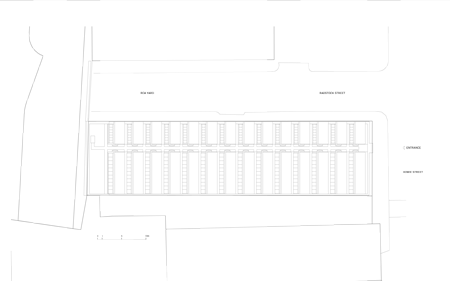
Click for larger image
"It has been a great collaborative process working directly with Professor David Rayson and his Department developing a building where it is possible to move freely from space to space; see paintings, drawings and art objects being worked on, and experience the sights, smells and sounds of a dynamic working environment," said architect Graham Haworth. "From the very first conversations the aim was to create contemporary purpose built spaces that matched the quality and character of the very best traditional painting studios in London, such as the generous Victorian studios at the V&A or the incredible spaces by Sydney Smirke and Norman Shaw at the Royal Academy.”
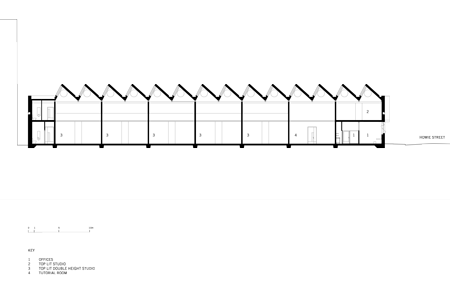
Click for larger image
Dr Paul Thompson, the new Rector of the Royal College of Art, said: “This is an historic occasion for the Painting Department, housed in Kensington Gore since its move from the V&A’s Painting Studios in 1991. It is also a unique opportunity to frame a key moment in the College’s history. On a personal level, having the opportunity to launch a whole new chapter in this department’s distinguished story is an amazing way to begin my career here at the Royal College of Art.”
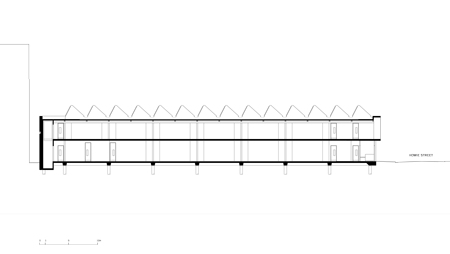
Click for larger image
“It is our intention with this exhibition to showcase a diverse range of practices, and reflect the cultural dynamic of the Department over the past ten years,” said exhibition curator and Head of Painting, Professor David Rayson. “Post-RCA, the artists continue to explore and celebrate the possibilities of painting within a contemporary art context and have often created their own unique contexts for the work to operate out from.”
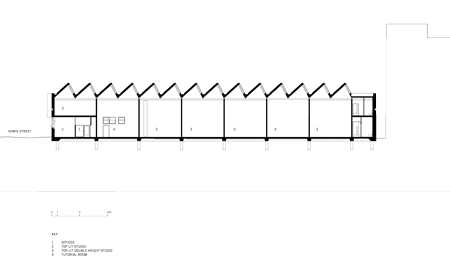
Click for larger image
About Haworth Tompkins
Haworth Tompkins are architects producing a wide range of bespoke buildings for specialist clients in the public and private sectors, manufacturing industry and the Arts. Founded in 1991, by Graham Haworth and Steve Tompkins, the practice has a growing international reputation for their design work; in 2007 they were short listed for the RIBA Stirling Prize for the Young Vic Theatre and in 2008 were awarded an International Architecture Award by the Chicago Athenaeum. Current projects include the Haunch of Venison Gallery, Liverpool Everyman Theatre, regeneration of the London Library and ongoing work for the National Theatre and Hayward Gallery.
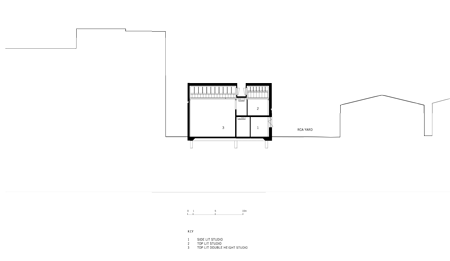
Click for larger image
About the Painting Department
The aim of the Painting Department is to provide the opportunity for exceptionally talented students to extend their ideas and abilities, gain confidence and develop their powers of self-criticism. The range of tuition is extensive in order that each student’s needs can be met. Artists learn by watching each other work and by talking to one another; contact with students from other disciplines within the College is invaluable in this respect. Teaching involves seminars, group crits and tutorials and there are regular lectures by visiting artists and scholars on current exhibitions and issues. www.rca.ac.uk/painting
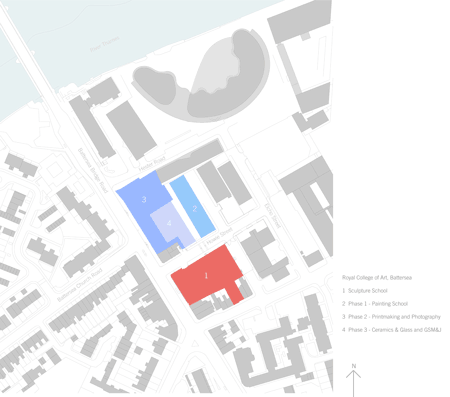
Click for larger image
About the Royal College of Art
The Royal College of Art is the world’s only wholly postgraduate university of art and design, specialising in teaching and research and offering the degrees of MA, MPhil and PhD across the disciplines of fine art, applied art, design, communications and humanities. There are over 900 masters and doctoral students and more than a hundred professionals interacting with them – including scholars, leading art and design practitioners, along with specialists, advisors and distinguished visitors.